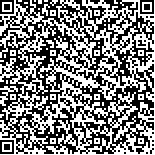下载中心
优秀审稿专家
优秀论文
相关链接
摘要

比辐射率是影响地表温度遥感反演精度的主要因素,是定量热红外遥感领域研究的核心内容,其与土壤质地、土壤成分、土壤水分和土壤粗糙度关系密切。首先通过试验方法初步研究了土壤水分和土壤粗糙度对土壤比辐射率的影响。其次采用傅里叶变换红外光谱仪观测不同水分条件下土壤比辐射率波谱。最后采用基于改变两次环境观测原理的一种主被动漫射式实时比辐射率测定装置观测不同粗糙度条件下8-14 μm土壤比辐射率均值的变化。结果表明,土壤比辐射率随土壤水分的增加而增加,其中影响最显著波段范围是3.3-5.3 μm,这个波段范围内波段平均比辐射率干土与湿土差异大于0.2;影响最小的波段范围是11-15 μm,这个波段范围内波段平均比辐射率干土与湿土差异在0-0.015之间;在热红外波段,8-9.5 μm是土壤水分对比辐射率影响最大的波段,干土与湿土比辐射率差异大于0.05;土壤比辐射率随着粗糙度的增加略有增加,干土和湿土都有此规律。
Surface emissivity primary influences the accuracy of land surface temperature retrieval using remote sensing methods. This parameter is important in thermal infrared remote sensing. This paper aims to investigate the effects of soil water content and roughness on the thermal infrared emissivity of bare soil through an experimental method. This work can provide useful information for developing a soil emissivity retrieval method via remote sensing. The spectral emissivity of two soils (loam and sandy loam) with different soil water contents was measured by a Nicolet IS10 Fourier-transform infrared spectrometer with an integrating sphere. Data were used to analyze the effects of soil water content on soil spectral emissivity. The average emissivity of both soil types with different particle sizes of 8-14 μm was determined using an active-passive diffuse emissivity measuring device. This device can determine the effects of soil water content on the average soil emissivity for 8-14 μm particles. Soil emissivity increases with increasing soil water content because of the high emissivity of water. The average emissivity of loam soil with water contents of 0%, 13.7%, 26.1%, and 43.4%are 0.81, 0.92, 0.93, and 0.95, respectively, for wavelengths from 3 μm to 11 μm, as well as 0.73, 0.89, 0.93, and 0.96, respectively, for wavelengths from 3.3 μm to 5.3 μm. Moreover, the average emissivity of sandy loam soil with water contents of 0%, 8.8%, 25.3%, and 28.6% are 0.82, 0.92, 0.94, and 0.95,respectively, for the wavelengths from 3 μm to 11 μm, as well as0.75, 0.89, 0.95, and 0.96, respectively, for wavelengths from 3.3 μm to 5.3 μm. For the effects of soil roughness on emissivity, the results show that the average emissivities from 8-14 μm are 0.916, 0.934, and 0.937 for particles with sizes less than 0.6, 0.6-1, and 1-2 mm, respectively, for the dry sandy loam soil, as well as 0.936, 0.951, and 0.959, respectively, for the dry loam soil. Soil emissivity increases with increasing soil moisture. Wavelengths from 3.3 μm to 3.5 μm are the most affected by soil moisture. In this wavelength range, the band-average difference in soil emissivity between dry and wet soils is higher than 0.2. The wavelengths with minimal effect include 11 μm to 15 μm, when the band-average difference in soil emissivity between dry and wet soils is lower than 0.015. For the thermal infrared atmospheric window waveband (8-14 μm), wavelengths from 8 μm to 9.5 μm are the most influenced by soil moisture. In this range, the band-average difference for soil emissivity is 0.05. Soil emissivity slightly increases with increasing particle size for dry and wet soils. Furthermore, soil emissivity increases by more than 0.05 for bands 10, 11, and 12 of ASTER data with increasing soil water content.

